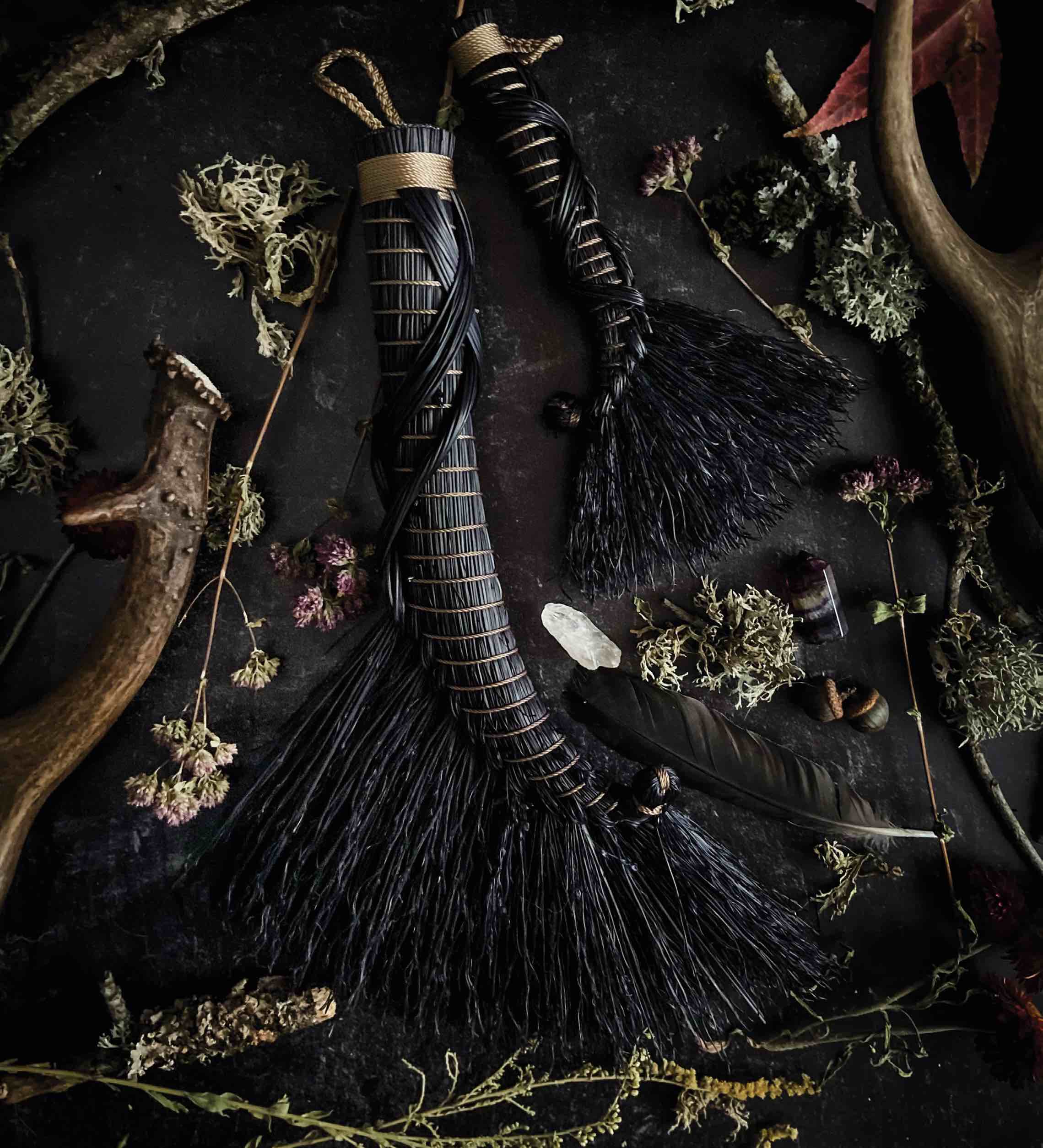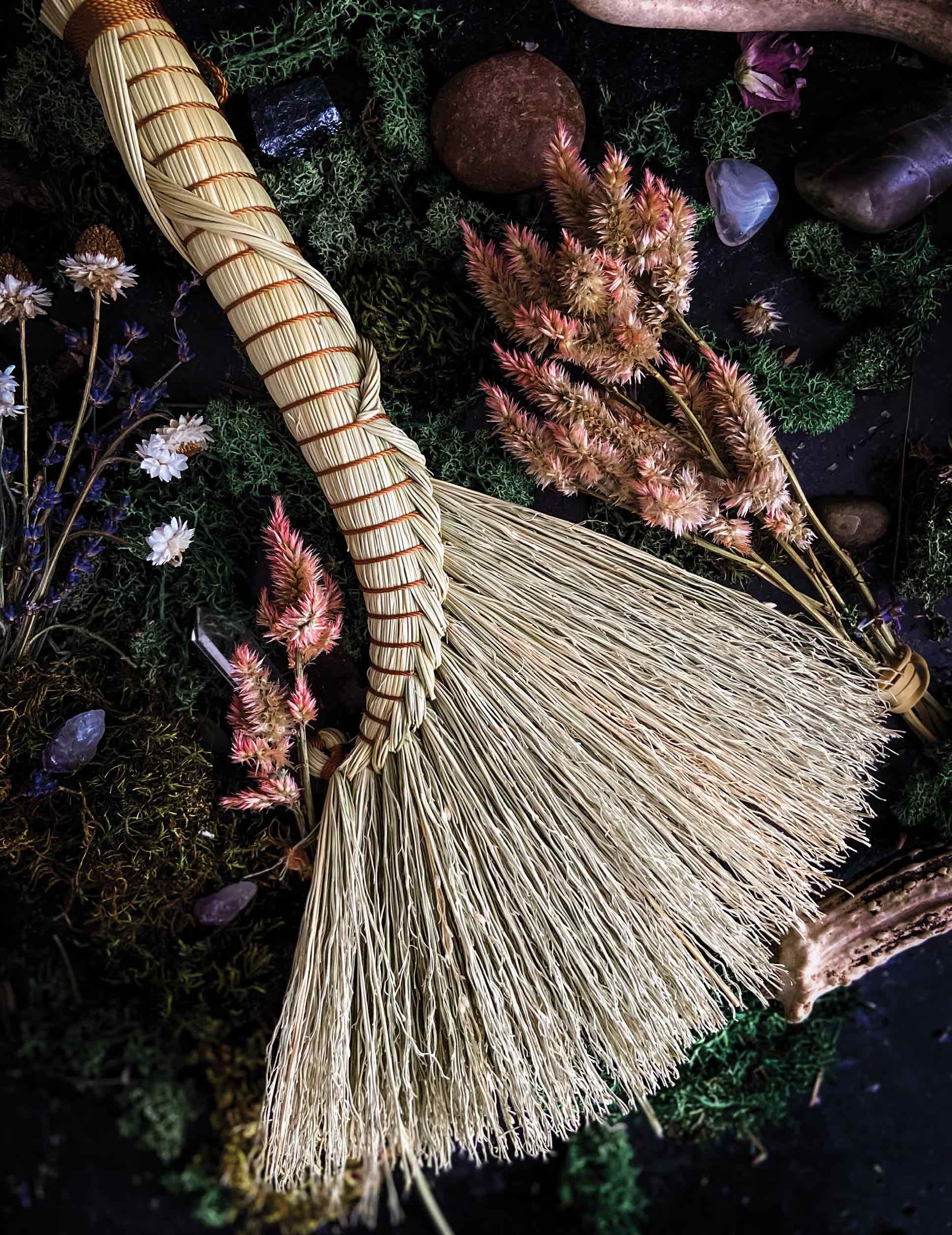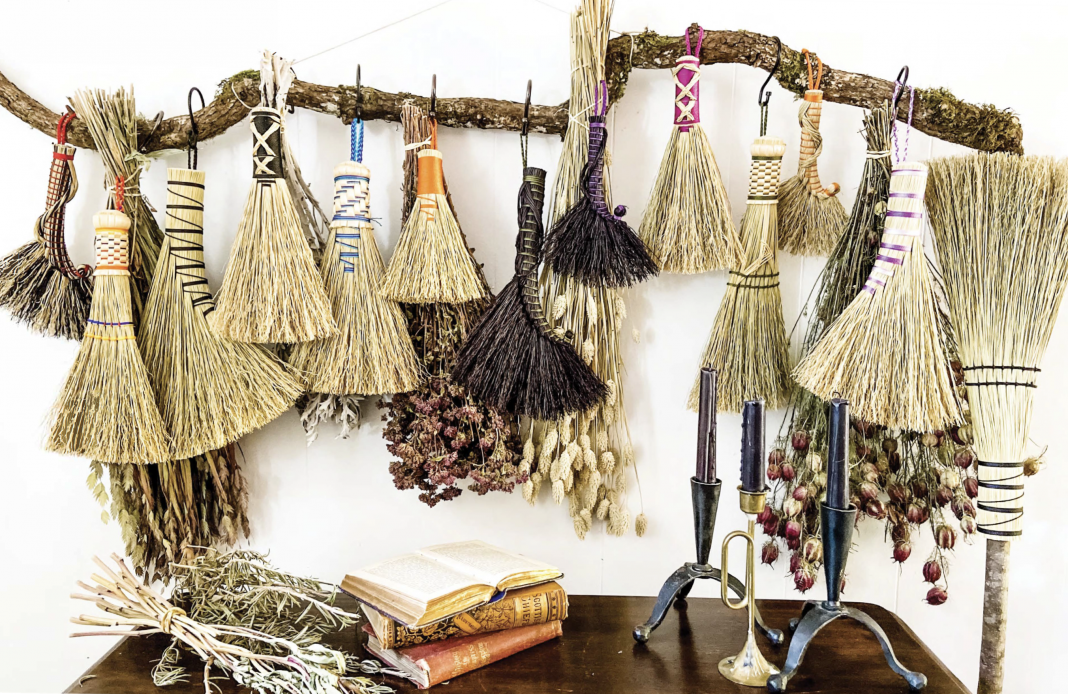Alyssa Blackwell is busily preparing for a craft popular handmade brooms will be bought and treasured by purchasers from all over the Portland, Oregon, area. Less than four years ago, she’d never made a broom. Today she makes her magical wares in a garage turned studio, and it’s a life’s work and study.
Something about broomsticks resonates deep within our collective unconscious. I imagine people swept out caves in the Paleolithic era, making things clean both literally and perhaps spiritually—out with the old, in with the new. The earliest brooms were likely bundles of twigs, but we can’t know for sure. We do know they existed in the ancient world, even if we don’t have a precise date for their first appearance. Now, as the image of who does the cleaning continues to evolve—women? wives? maids? professional cleaners of any gender identity?—the job often goes to machines. And yet, the broom remains popular, and more and more, those brooms are handmade and serve the purpose of cleansing more than just the physical space.
“Brooms have always been important for women,” says Tish Owen, a Nashville-based Wiccan priestess, author, and speaker. “We swept off the hearth and the front stoop, chased the birds out of the garden … almost every witch I know owns a broom or two. We decorate them, sweep the energy circle clean, and sometimes use them to open and close circles. We disdain plastic handles and cheap bristles. We go for the handmade Shaker brooms, the honest-to-goodness straw brooms, and the decorated fancy brooms.”
These days, the witches and broom aficionados may be more openly men or nonbinary individuals, but the passion for the exquisite object remains. And broom lovers may choose brooms for their beauty and grace alone, with no motive for them but delight. This world is familiar to Alyssa Blackwell.
She took her first broom-making seminar in late summer 2018 along with her mother. Their teacher, Betania Ridenour, gave them the basics. Blackwell ran with them. “My first broom from the workshop was a long-bristled, untrimmed, thick, round whisk with a woven handle. I still hang it in the house and use it to sweep the cobwebs.”
The enchanting nature of the broom and its making drew her in.
“I adore fairytales and all things fantasy-related,” she says. “There are also a couple of other established broom makers in my town, and I’ve always seen their brooms at our local markets. When I started coming out as a witch, my mom got me a set from them, and I still love and use those brooms. I noticed immediately that when I used a handmade broom, I felt grounded and mindful, and I noticed a difference in the energy of my space after I’d used it even just for sweeping dog hair off the floor.”
Expecting her second child over the winter, she spent the fall making more than thirty brooms, perfecting her craft as she poured her own intent into her work. Each was destined to be a gift for someone dear to her. The color, the pattern, the elements—all of these she selected with care for the recipient. And as she worked, Blackwell built more than just an aesthetic.
“I took the workshop at a time when I was really struggling to find meaning and fulfillment in domestic work as a stay-at-home parent,” she says. “I was really delving deep into my spiritual practice. Making brooms helped me connect to my space and think of home-keeping as a reclamation practice rather than tedious or monotonous work. With handmade brooms, the act of sweeping became more meditative and sacred than mundane, and more about shifting the energy of the space than just cleaning it.”

She says she fell back in love with her own space in the process. After her son’s arrival, she wanted to keep working, especially as those who’d seen her Yule gifts started asking whether she’d make brooms for them. “After leaving my career to stay home in early 2016, I felt like the work I was doing in my home and for my family wasn’t seen or valued by society,” she says. “I harkened for a time when women’s work was considered important and essential.”
Blackwell jumped at the chance. With a baby (now two-and-a-half) and a now-five-year-old, she began work at her dining room table. But all magic comes at a price, including the cost of broomcorn and sticks for handles. To make more, she needed to charge, and before long, she had a burgeoning business. She sold at fairs and markets, and eventually branched out to Etsy and her own website.
“I think it’s so important for human beings to create useful things, and to use beautiful things,” she says. “Using objects that are made by hand, especially if you make them yourself, has a way of connecting people to their human-ness as well as the earth. It brings forth deep-seated, ancestral memories of times when life was slower and people had a simpler idea of what was important to them in their day-to-day lives outside of convenience and capitalism.”

When the pandemic started, her husband Brandon also began working from home. With even less space, the couple turned half the garage into a workspace for Alyssa. “I just really fell in love with the process and with the brooms themselves. I found a different kind of creativity in broom making, and I couldn’t stop thinking about new ways to make them and the ways that they could impact the lives of others as well,” she says.
The whole garage became a workshop—ideal, since broom making requires space. Her handles she sources from a local fellow broomsquire, Thurman Scheumack, who cures specially scouted handles with a local kiln. Kiln-treated handles ensure a longer life and a pest-free piece of wood.
Asked about the ritual nature of creating a broom, Blackwell responds, “It’s a very rhythmic process. Making a broom by hand uses your whole body—hands, arms, legs, feet, core, back, heart, brain. You can’t really do anything else while you’re making a broom until it’s finished, so it can be a very mindful, meditative process, especially if you’re infusing the broom you’re making with any specific intentions or manifestations.”
Blackwell’s brooms delight us; they are full of energy, beauty, and a mythic charge of the craftperson’s energy. I ask her what she wants someone who buys a broom from her to know before they take it home.
“So many things,” she says. “That there are many ways to use it. That it’s a functional and meaningful object. That they should hang it up out of direct sunlight. And that I made it intentionally for them, with no ill will and with genuine hope that it brings them all the blessings they need.”


































